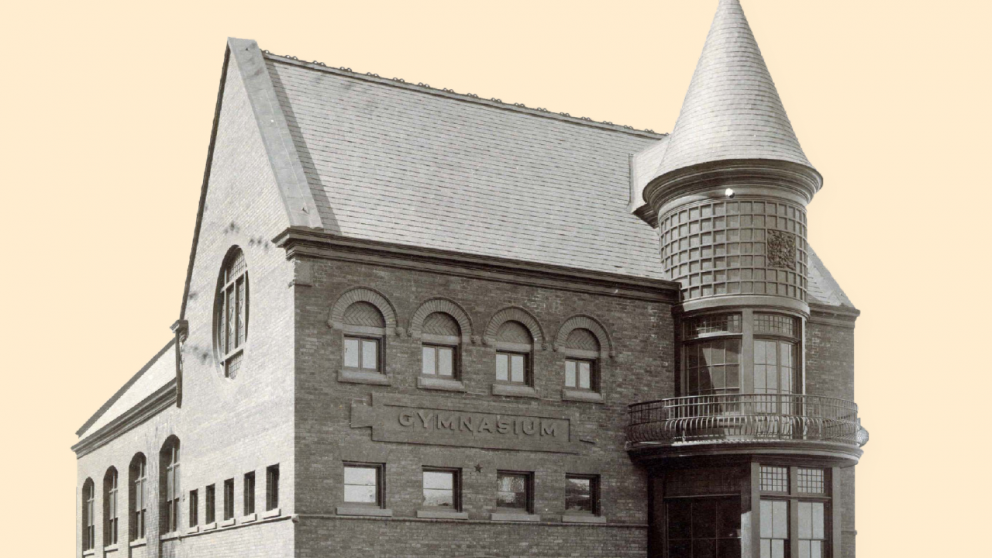
From the Archives: Student Bodies, Student Space

By Jen Monger
From 1824 to 1864, the first three initial sites of Rensselaer consisted of a single building for academics. There was no campus, there were no dormitories, and there were no gathering spaces for students to socialize, run, jump, or play. Sports, or sporting events, did not exist the way they do today. Students attended Rensselaer for rigorous study in the classroom and in the field.
No one emphasized this more than school co-founder Amos Eaton, who described, in 1827, a distinct characteristic of the Rensselaer School: “Corporeal exercise is not only necessary for the health of the students, but for qualifying them for the business of life. When such exercises are chosen by the students, they are not always judiciously selected. Such exercises as running, jumping, and the like detract from that dignity of deportment and carriage, which becomes a man of science. Therefore a system of exercises is adopted at this school, which improves the health and the mind. Such exercises as land-surveying, botany, examining workshops and factories, watching the progress of agricultural operations...are made the duties of students for a stated number of hours each day.”
Athletics, or movements of the body in sports in the manner we understand today, were simply out of the question during the first century of Rensselaer, when the proper deportment of the body blended with the integrity of the mind during “afternoon amusements” led by a professor or assistant at workshops, factories, or in the field.
With a one-building campus and no formal space for students to occupy and congregate except for lectures and study, the students eventually found their own space. In the 1860s, when the Transit yearbook came into existence, students started publishing graphics that point to various social and sporting clubs they created.
Having such an intimate connection with the city of Troy, students utilized spaces such as the Rensselaer Park, three miles north of Troy, for their gaming and sports. By 1883, nearly 60 years after the Rensselaer School opened, the students advocated for their own gymnasium, and submitted a petition to the Board of Trustees, asking that steps be taken to provide a suitable gymnasium for student use. In 1886, the Trustees purchased a lot on the south side of Broadway, at the foot of what we now know as The Approach. A gymnasium was completed in 1887, the first Rensselaer building dedicated solely for student social clubs and physical activity.















